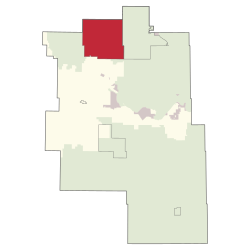the chair is now Raymond Carifelle and councillors are Claude Cunningham, Renee Cunningham, Greg Gauchier, Lance Gauchier, as of 2024.
Contents
Peavine Metis Settlement | |
|---|---|
Metis Settlement | |
 Location within Big Lakes County | |
Location within Alberta | |
| Coordinates: 55°51′N116°16′W / 55.850°N 116.267°W | |
| Country | Canada |
| Province | Alberta |
| Region | Northern Alberta |
| Census division | 17 |
| Government | |
| • Chair | Kenneth Noskey |
| • Governing body | Peavine Metis Council |
| Area (2021) [2] | |
| • Land | 328.42 km2 (126.80 sq mi) |
| Population (2021) [2] | |
• Total | 310 |
| • Density | 0.9/km2 (2/sq mi) |
| Time zone | UTC−7 (MST) |
| • Summer (DST) | UTC−6 (MDT) |
| Peavine Metis Settlement | |
Peavine Metis Settlement is a Metis settlement in northern Alberta, Canada within Big Lakes County. [3] It is located on Highway 750 to the northeast of High Prairie.
